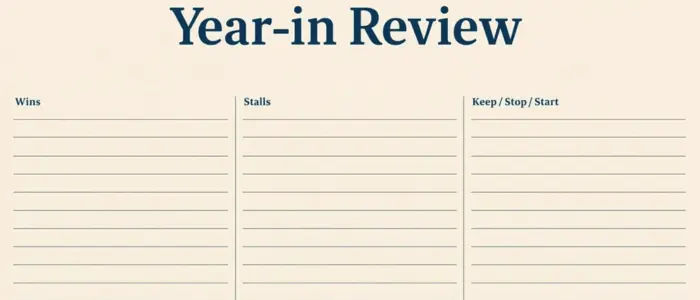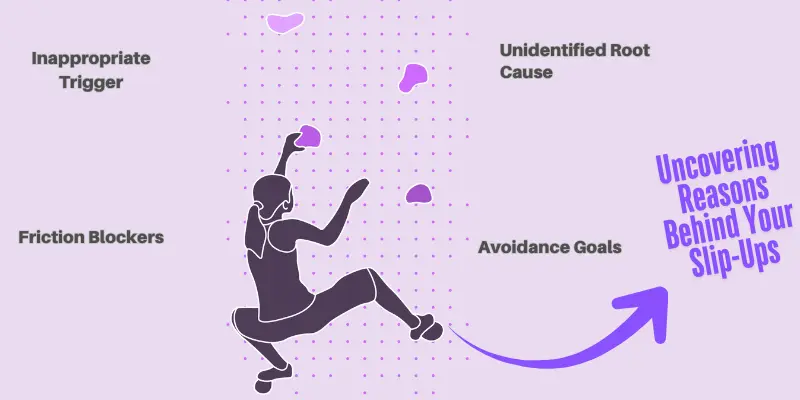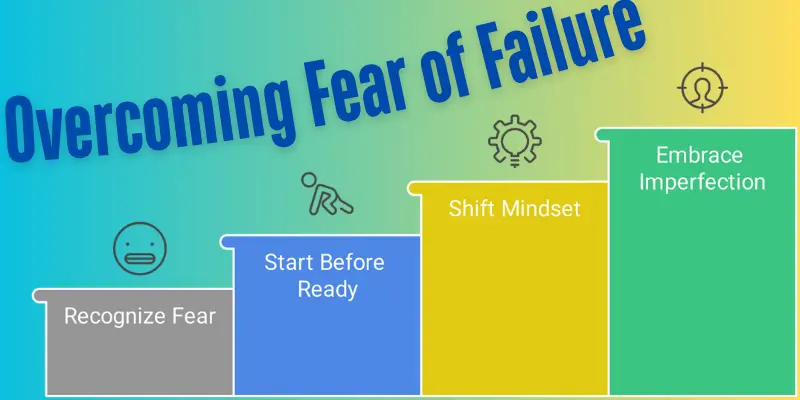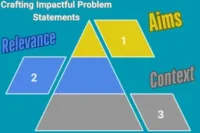Your 2026 Goals for the Next Year: Set, Stick, and Outperform
Published: 22/10/2025
You start January fired up, scribble a fresh list of goals—and by February, they’re buried under errands and “I’ll start Monday.” Sound familiar? Most of us stall from burnout or guilt, not laziness. The plans didn’t fit real life.
This guide flips that. You’ll set goals that stick because they’re simple, specific, and yours. We’ll start strong, dodge the mental traps that trip people up, and keep the engine running all year with tiny weekly moves. By the end, you’ll have a plan that actually feels right—and a clear first step to take today.
“Last year I failed three fitness resets. I stopped chasing a 5 a.m. version of me that doesn’t exist and switched to 10k steps plus two 20-minute lifts a week. That tiny shift is the only reason I’m still at it.”
Look Back Before You Leap Forward
Before diving into what worked and what didn’t, take a moment to clear your mind and embrace the power of reflection—this sets the foundation for making intentional, impactful changes in the year ahead.
Spot What Worked and What Tanked Last Year
Grab 20 minutes. Open a doc (or paper) and make three quick lists:
Wins:
- What moved the needle? Add 1–2 reasons each win happened (timing, support, clear steps).
Stalls:
- Where did you lose steam? Note the exact week it slipped and what got in the way.
Keep / Stop / Start:
- One line per item. Keep what fed your energy, stop what drained it, start one tiny upgrade.

Dig Up the Real Reasons Behind Your Slip-Ups
Don’t label it “lack of discipline.” Get specific.
Goal type check:
- Was it an avoid goal (“stop scrolling at night”) instead of an approach goal (“read 5 pages at 10 p.m.”)? Approach goals are easier to act on.
Friction audit:
- What tiny blockers showed up? (Gym too far, no shoes by the door, budget app clunky.) Remove one friction per week.
Five Whys:
- Ask “why?” until you hit the root. “Missed workouts → why? Late nights → why? Doomscrolling in bed → why? Phone next to pillow…” Now you know the lever.
Trigger swap:
- Keep the routine but change the cue. Example: put the book on your pillow so “lights out” triggers 5 pages.

Line Up Fresh Goals with What Fires You Up Now
If a goal doesn’t match your season, it dies fast.
Values snap test:
- Write 3 things you care about this year (health, family time, learning). Any goal that doesn’t fit gets cut or rewritten.
Minimum viable version:
- Shrink the goal to something you can keep on your worst week (1 set, 1 page, USD 25 auto-transfer). Consistency first, volume later.
Tiny proof loop:
- Run a 7-day test. If it feels heavy by day 3, it’s too big. Cut it by half and try again.
Research shows simple reflection boosts follow-through and later performance—use it to pick the right goals before you sprint. (Harvard Business School Library)Evidence pulse
Pick Goals That Fit Your Life Buckets
To make your goals truly sustainable, focus on the small changes that align with your current lifestyle—these tweaks will fuel long-term success without overwhelming you.
Health Tweaks That Build Energy Without the Crash
Health goals shouldn’t make you feel like you’re dragging yourself to the finish line. Try these low-pressure tweaks that build energy over time without the crash:
- Get Moving Without Gym Guilt: Set a realistic goal like “15-minute walk after lunch.” Gradually raise the bar only if you want to, but don’t let it feel like a chore.
- Sleep Tuning: Aim for 7–8 hours a night. Track it without turning it into a perfection game. A 15-minute wind-down (no screens) can be a game-changer.
- Food without Overhaul: Make one small tweak, like swapping your morning coffee for green tea or adding a veggie to lunch. Build from there.
- Stretch, Don’t Stretch: It’s easy to neglect this, but a quick 5-minute stretch a couple of times a week can prevent the kind of muscle burnout that often leads to “I’ll just skip it tomorrow” thinking.
These aren’t big changes. But they add up, and with tiny consistent shifts, you avoid the burnout that leads to bailing out mid-year.
| Date | 15-Minute Walk | 1 Veggie per Meal |
|---|---|---|
| Monday | [ ] | [ ] [ ] [ ] |
| Tuesday | [ ] | [ ] [ ] [ ] |
| Wednesday | [ ] | [ ] [ ] [ ] |
| Thursday | [ ] | [ ] [ ] [ ] |
| Friday | [ ] | [ ] [ ] [ ] |
| Saturday | [ ] | [ ] [ ] [ ] |
| Sunday | [ ] | [ ] [ ] [ ] |
Money Moves to Ease the Daily Grind
Money doesn’t have to be stressful—it’s all about small, automatic moves that reduce the mental load:
- Automate Bills & Savings: Set up auto-transfers to savings or investment accounts—don’t worry about perfect amounts, just start. Even USD 25 a week adds up.
- Track Your Expenses Weekly: Get real about where your money’s going. Use an app like Mint or even a basic Google Sheet for a quick snapshot. Just look at it weekly, don’t stress about perfection.
- Cut One Unnecessary Subscription: Maybe it’s a streaming service you never use or an unused gym membership. Free up that mental space and add the savings to your emergency fund.
These moves aren’t about getting rich overnight—they’re about making life easier, reducing daily friction, and gaining back time for what matters.
Relationship Fixes for Deeper Connections
It’s easy to let relationships fall into “check-the-box” mode. But stronger bonds don’t take drastic changes, just little tweaks that improve connection:
- 1-on-1 Time with Your Partner: Schedule 15–30 minutes of undistracted time each day—whether it’s coffee in the morning or a quiet chat before bed.
- Reach Out to a Friend Weekly: Whether it’s a quick text or a scheduled video chat, prioritize friendships. The small gestures matter more than you think.
- Family Calendar Sync: Plan one family activity each week that’s fun and easy (dinner, park time, movie night). Aim for low-pressure but high-connection moments.
A powerful example: Someone I know made one small change: They added a weekly check-in with their partner, asking what was one good thing that happened this week. This tiny act made the relationship feel more supported and connected, even when life was chaotic.
Growth Ideas Like Reading More or Trying New Skills
Personal growth doesn’t mean you have to dive into a massive project. The smallest actions can lead to huge changes over time:
- Read 10 Pages a Day: Instead of “read 50 books this year,” go for “10 pages per day.” That’s 3,650 pages per year—and more than enough to complete many books.
- Master One New Skill: Set a goal to learn something small but impactful. Take a 10-minute lesson on a topic that interests you. A month of daily practice adds up.
- Digital Detox for Focused Learning: One person I know wanted to travel more but never had time. They took a 30-day digital detox, eliminating social media distractions. They not only freed up time but also saved enough to fund a trip to Europe. That’s the power of rethinking where your time and focus go.
Small, sustainable growth beats one-off bursts of effort. Make it fit into your daily life, and it’ll stick.

These goals aren’t about fitting into some cookie-cutter mold—they’re about making your life easier, not harder. These small, achievable steps not only build towards larger ambitions but help you feel like you’re making progress, week by week. That’s the real secret to consistency.
Set Them Up Right So They Don’t Fizzle
Before diving into how to make your goals concrete, remember that clarity and simplicity are key—small, clear steps are always more achievable than big, vague ambitions.
Make Goals Specific and Doable with a Simple Framework
Goals don’t stick if they’re vague or impossible to track. Here’s a simple way to turn your big ideas into actionable steps:
Use SMART goals:
This old-school framework works because it keeps things clear and achievable. Break down your goal to be:
- Specific: “I will walk 10,000 steps per week” vs. “I want to get fit.”
- Measurable: Can you track it? (Steps, pages read, savings transferred).
- Achievable: Be realistic—start small, and increase gradually.
- Relevant: Does this matter to you right now? (Don’t chase goals you’re not ready for).
- Time-bound: Set a deadline for progress (weekly check-ins).
Example: Instead of “Eat healthier,” try “Eat one veggie at lunch 4 days a week.” Then track it on your phone or paper—something concrete.
Chop Them into Small Steps You Can Tackle Weekly
Big goals are scary. The key is breaking them down into digestible chunks you can take on each week. Here’s how:
Weekly focus:
- Break your goals into bite-sized weekly actions. You don’t need to go from 0 to 100. If your goal is “Save USD 1,000 by June,” start with a weekly target, say USD 50–100.
Micro-goals:
- It’s not about the big leap, but the small wins. For a reading goal, focus on “10 pages a day” instead of “read 30 books.”
Set a goal for today, not tomorrow:
- When you start each week, set your one focus. Pick one action you will do today to push the goal forward. It makes it easy to show up daily.
These small, repetitive actions make the bigger goals feel less intimidating.
Track Wins Without Turning It into a Chore
Tracking progress doesn’t need to be complicated—it just needs to be visible and motivating.
- Simple tools: Use a basic habit tracker app or a printable sheet with checkboxes (even a journal works). Tracking doesn’t need to be fancy. It’s just about seeing progress.
- Celebrate wins: Instead of focusing on all the “things left to do,” give yourself credit for what you’ve knocked out. If you walked 5,000 steps today instead of 10,000, that’s a win!
- Quick check-ins: At the end of each week, ask yourself—what worked, what didn’t? Did you feel energized or drained? You don’t need an essay, just a sentence or two.
A YouTube creator shared how using a simple weekly habit tracker turned around their year. They started tracking just 3 small actions—walking, reading, and hydration—and saw major improvements in energy and consistency by year-end. The best part? No complicated setup. Just paper + pen. This approach made the difference because it kept them on track without the overwhelm.
Tweak on the Fly When Life Throws You Off
Goals aren’t meant to be rigid—they should adapt when life changes. Here’s how to keep things moving:
Be flexible:
- If a goal’s no longer working for your schedule, tweak it. Let’s say you planned to run every morning but ended up working late most days. Change to a 15-minute walk at lunch instead—same goal, different method.
Mini-backup plans:
- Always have a mini version of your goal for the weeks when things get hectic. Instead of 10 pages a day, aim for 5. If 10k steps feels like too much, aim for 3,000.
Course correction:
- Regularly review and adjust. Goals that are working need to be bigger or more challenging; goals that aren’t working need to be simplified or replaced. Quick reviews let you tweak on the fly without feeling like a failure.
Real example: A fitness newbie who was struggling with consistency set the goal to work out 5 days a week. When life got busy, they adapted by switching to a 3-day plan plus one short stretch session daily. Tracking these smaller victories led to a huge improvement in overall consistency.
Staying on track doesn’t require massive shifts—it’s about creating an environment where your goals can breathe, adjust, and grow. By breaking them down, tracking wins, and tweaking when necessary, you’ll avoid burnout and keep moving forward.
Tackle the Mind Games That Trip You Up
Before you dive in, it’s important to recognize that fear is natural—but it doesn’t have to control you. Taking that first step, even imperfectly, is the key to unlocking your potential.
Shake Off That Fear of Flopping Before You Start
Fear of failure is the one thing that stops most people from even starting. But here’s the truth: not starting is the biggest failure of all.
- Start before you’re ready: Don’t wait for the perfect plan or the perfect time. The first step doesn’t have to be big. It just has to be taken. If you wait until everything is aligned, you’ll never start.
- Mindset shift: Instead of thinking “What if I fail?” ask yourself, “What if I succeed?” Flip the script and focus on the positives.
- Embrace imperfection: Perfection is a myth. The point isn’t to hit the bullseye every time—it’s to practice, to try, and to improve. Perfectionism often traps people in analysis paralysis.

One Quora user shared how setting small vision meetings early on, where they mentally prepared for failure, helped them push through fear. By acknowledging that things might not go perfectly, they removed a huge weight off their shoulders—and it was then that they actually started achieving their goals.
Dodge Burnout by Managing Your Energy First
Burnout isn’t just a “work problem”—it affects your life when you’re juggling goals. Manage your energy like a resource, not just your time.
Energy audit:
- Are you pushing yourself too hard, too fast? Constantly running on empty is a recipe for quitting. Take a week to track your energy levels at different points during the day (are you more drained after meetings or after gym sessions?).
Rest is key:
- Don’t treat rest like a reward; treat it like a necessity. Build it into your schedule. You don’t have to be ‘on’ all the time to make progress.
Focus on what fuels you:
- What activities make you feel recharged? For some, it’s nature walks or reading. For others, it’s having social time. Prioritize these restorative moments.
A real-world example: A Reddit user shared how they were stuck in a cycle of working late and burning out. They shifted their focus by adding 5-minute daily breaks and weekend “off days.” After two months, they noticed their productivity was higher, and they were feeling more energized, not drained. Small energy management tweaks helped them avoid the burnout trap.
Deal with Guilt When You Slip and Get Back Fast
Slipping up on a goal doesn’t mean the whole year is ruined—it just means you’re human.
- Shift the narrative: Guilt traps you in a loop of shame and self-sabotage. Instead, reframe it as a learning opportunity. When you slip, ask yourself, “What didn’t work and why?”
- Be kind to yourself: Perfection isn’t the goal. You don’t need to achieve every goal every single time. The goal is consistent effort over time.
- Quick bounce-back: If you miss a day or a week, don’t quit. Re-start by making the next step as small as possible. The key is momentum, not perfect execution.
A user on Quora shared how they beat the guilt of missing workouts by cutting themselves some slack and switching to a modified goal that was easier to get back into. Instead of punishing themselves, they simply said, “Okay, tomorrow’s a new day.”
Spot Goals That Aren’t Yours and Swap Them Out
Many times, we set goals because we think we should, not because they align with who we really are. These kinds of goals drain us.
- Identify external pressure: Is this goal from your parents, social media, or societal expectations? If yes, it’s probably not yours.
- Ask the big question: Does this goal genuinely excite you, or are you just chasing what other people are doing? If it doesn’t resonate with your core values, let it go.
- Switch out for a personal goal: Replace “What should I be doing?” with “What do I truly want to do?”
In a forum discussion, one user confessed that they set the goal to start a side hustle, purely because they saw everyone else doing it. After reflecting, they realized they didn’t want to be an entrepreneur—they just wanted more free time. They replaced their goal with “take more vacations and enjoy weekends”—and found more happiness with less stress.
Mindset is everything when it comes to goals. Fear, guilt, and external pressure will always be there. The trick is recognizing these mind games and pushing past them with small, steady steps. By focusing on your energy, bouncing back fast, and only chasing goals that really matter, you’ll not only avoid burnout but stay on track all year long.
Keep the Fire Going All Year Long
To keep your momentum, it’s essential to build small, consistent habits that keep you aligned with your goals—even when life gets busy.
Build Rituals Like a Quiet Spot to Review Progress
One of the biggest mistakes people make with goals is not regularly checking in. Without rituals, it’s easy to lose sight of progress or get sidetracked.
- Set a weekly review time: Choose one day a week (Sunday works for many) to sit down and review your goals. It doesn’t have to be long—just 10–15 minutes to see what’s working and what’s not.
- Create a quiet space: Find a peaceful spot where you won’t be distracted. This is your dedicated space for reflection, not emails or social media.
- Ask the right questions: “What went well? What could be better? What can I tweak?” Keeping this simple helps you stay on track.
Real-world example: A group of friends decided to do a “26 Before 2026” challenge—setting 26 small goals to complete by 2026 (like “read 10 pages a day” or “learn to cook 3 new dishes”). They built a weekly ritual of checking in together. Those small, weekly reviews kept them engaged and helped them make steady progress, turning their micro-goals into bigger achievements.
Use Tools and Apps for Easy Check-Ins
You don’t need to be tech-savvy to stay on track. A few simple tools can help you track progress without turning it into a hassle.
- Apps: Try tools like Habitica, Notion, or Google Keep—they allow you to track habits, set reminders, and stay consistent with minimal effort.
- Paper trackers: If you’re more traditional, a simple paper habit tracker can do the job just as well. You don’t need fancy features; just something visible that reminds you to keep going.
- Streaks & Rewards: These apps often have features that reward you for consistency, which helps keep you motivated.
A user on Reddit shared how using Notion helped them turn around their fitness routine. They set up a habit tracker, and after just one month of checking in daily, they saw big shifts in their motivation and consistency.
Roll with Big Changes Without Losing Sight
Life is unpredictable. Whether it’s a new job, moving cities, or a sudden family commitment, it’s easy to lose sight of your goals when big changes happen.
- Simplify your goals during big changes: If life gets chaotic, strip your goals down to the essentials. Focus on one small, non-negotiable habit (e.g., “Walk for 10 minutes daily” or “Write 3 sentences each morning”).
- Keep a “low-maintenance” version: When things get busy, opt for goals that need minimal energy. That way, you don’t have to throw in the towel entirely.
- Reframe big changes as an opportunity: Adjust your goals to fit your new reality. If you’re moving, maybe your travel goal can be about exploring your new area. If you’re starting a new job, aim for a work-life balance goal instead.
A great example of this is the “26 before 2026” challenge. One person in the group had to shift their goals after a job change, but they didn’t give up—just adapted. Instead of aiming for 30 minutes of exercise, they swapped it to 3 sets of 10-minute walks throughout the day, fitting it into their new schedule.
Celebrate Small Wins to Fuel the Long Haul
Don’t wait for the big finish to give yourself credit—small wins keep the energy flowing.
- Set mini rewards: After hitting a weekly target, reward yourself with something that doesn’t derail your progress (e.g., a nice coffee, an episode of your favorite show).
- Share your wins: Tell a friend, post a small update, or share it on social media. Celebrating in public holds you accountable and feels rewarding.
- Reflect on your growth: At the end of each month, look back and celebrate what you’ve achieved. Those little steps are building your momentum for the bigger goal.
A user in the “26 Before 2026” challenge said that celebrating the mini-goals—like cooking a new recipe or reading one book a month—kept them energized for the big shifts. It wasn’t the finish line that kept them going, but those weekly mini-celebrations.
By setting up routines, using tools, rolling with life’s punches, and celebrating wins along the way, you can make sure your goals stick. Small shifts can lead to big transformations. So, don’t wait for the perfect moment—start today with one simple action, and keep the momentum going.
The Five Big Mistakes That Sink Most Goals
Before diving into the mistakes, it’s important to remember that achieving goals isn’t about doing everything at once—it’s about focusing on what truly matters and setting yourself up for steady success.
1. Picking Too Many and Spreading Yourself Thin
Trying to overhaul your entire life at once is a surefire way to burn out. When you set too many goals, you dilute your focus and energy.
The Myth of Multitasking:
- Multitasking can reduce productivity by up to 40%. Focusing on one goal at a time leads to better results.
Example:
- A person aiming to exercise daily, eat healthier, meditate, and learn a new language often ends up doing none of these consistently.
Fix:
- Choose 1–3 goals that truly matter to you. Prioritize them and give them your full attention.
2. Ignoring the Excitement Drop After Week Two
The initial motivation from setting a goal often fades quickly, leading to a drop in commitment.
The “Fresh Start Effect”:
- Research shows that people are more likely to make changes after a new week, month, or year begins, but this motivation can wane quickly.
Example:
- Many people abandon their New Year’s resolutions within the first few weeks due to declining enthusiasm.
Fix:
- Build habits that don’t rely solely on motivation. Make your goals part of your routine to ensure consistency.
3. Skipping Reviews and Letting Things Drift
Without regular check-ins, it’s easy to lose sight of your progress and veer off course.
Lack of Accountability:
- Studies indicate that individuals who don’t track their progress are less likely to achieve their goals.
Example:
- Someone aiming to save money might forget to review their spending habits, leading to overspending.
Fix:
- Schedule weekly or monthly reviews to assess your progress and make necessary adjustments.
4. Chasing What Others Want Instead of Yours
Setting goals based on societal expectations or peer pressure can lead to dissatisfaction.
External Pressure:
- Research shows that people who set goals to impress others are less likely to achieve them and feel less fulfilled.
Example:
- Pursuing a career path because it’s popular, not because it’s your passion, can lead to burnout.
Fix:
- Reflect on your values and set goals that align with your personal desires and aspirations.
5. Forgetting to Build in Some Wiggle Room
Rigid goals without flexibility can lead to frustration when life inevitably gets in the way.
Unrealistic Expectations:
- Setting goals without considering potential obstacles can set you up for failure.
Example:
- Committing to a strict workout schedule without accounting for travel or illness can lead to missed sessions and guilt.
Fix:
- Allow for flexibility in your goals. Build in buffer days and be kind to yourself when things don’t go as planned.
By avoiding these common pitfalls, you can set yourself up for success and make meaningful progress toward your goals.
Conclusion:
Setting goals for the next year isn’t about making a flashy list that looks good on paper—it’s about picking what truly matters to you, avoiding the usual traps, and checking in regularly to stay on track. You’ve got the tools now: reflect on last year, set goals that make sense for where you are, keep your mindset in check, and don’t be afraid to tweak things as you go.
Grab a notebook today, jot down three goals that really light you up, and take that first small step toward them. The only thing that matters now is starting.
What’s one goal you’ll chase this year? Drop it in the comments—we’re all in this together, taking one step at a time!
Got Questions? Unlock Your Next Year’s Goals Now!
Start by reflecting quietly on last year’s wins and what didn’t work. Then, choose three to five goals that align with your values. Break them down into monthly chunks and set a weekly check-in to keep yourself on track. Simple apps like Google Keep or Habitica can send reminders without overwhelming you.
Track your energy levels to spot burnout before it takes over. On tough days, switch to easier tasks or take a break to recharge—consider a digital detox. Remind yourself that small steps still lead to progress, and managing your energy will help you stay on track longer.
Don’t let guilt stop you. It’s normal to slip up. Take a step back, figure out why the goal didn’t fit, and tweak it into something smaller that excites you. One setback doesn’t derail the entire year. Remember, consistency is what counts, not perfection.
Review your goals regularly, at least once a month, or when something big changes in your life (new job, big move). If a goal feels off-track, swap it out without guilt. Early tweaks keep you moving forward and prevent you from getting stuck.
Make tracking fun! Use simple tools like a vision board or a basic app with streaks. Celebrate your wins with small rewards, and keep it light—maybe just jot down a quick note every Sunday about what went well.
Take a moment to pause and ask yourself why you’re pursuing those goals. If they’re driven by outside pressure (society, friends, etc.), it’s time to drop them. Go after what excites you, not what you think you should be doing. When your goals align with your true desires, you’ll be far more motivated to follow through.

- Be Respectful
- Stay Relevant
- Stay Positive
- True Feedback
- Encourage Discussion
- Avoid Spamming
- No Fake News
- Don't Copy-Paste
- No Personal Attacks



- Be Respectful
- Stay Relevant
- Stay Positive
- True Feedback
- Encourage Discussion
- Avoid Spamming
- No Fake News
- Don't Copy-Paste
- No Personal Attacks





